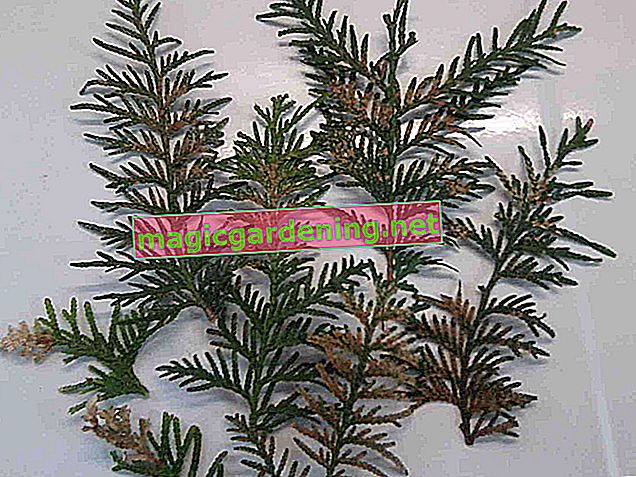
Why does Thuja Brabant turn brown?
The list of possible causes for Thuja Brabant to turn brown is long:
- Bad location
- too much sun
- Earth too dry
- Soil over-fertilized
- Pest infestation
- Root rot
also read
- The best time to plant Thuja Brabant
- The growth of Thuja Brabant
- The thuja in the pot turns brown - causes of brown needles
Most problems are caused by incorrect maintenance. Illnesses are mostly caused by poor care.
Diseases are rarely to blame for the discoloration
Except for root rot, diseases almost never occur in Thuja Brabant. This variety of the tree of life is almost resistant to shoot deaths caused by fungi.
Root rot is caused by too much moisture in the soil. When planting the hedge, make sure that the soil is permeable to water so that no waterlogging can occur.
Pest infestation by the leaf miner is also rarely a problem with Thuja Brabant.
Avoid care mistakes
Make sure that the soil is always slightly damp, but that there is no waterlogging. Water when it is very dry, especially when the hedge is still young. This also applies in winter. Wait here for frost-free days to water Thuja Brabant.
Overfertilization is a real problem for the tree of life. Do not fertilize too often and follow the directions on the packaging.
It is even better if you only use organic fertilizers such as compost, horn shavings (€ 6.39 on Amazon *) and deposited manure. Mulching is also a great way to add nutrients to the hedge without over-fertilizing it.
A good location for Thuja Brabant
Like all Thuja varieties, Thuja Brabant likes a sunny to partially shaded location, but does not tolerate excessive solar radiation during lunchtime. The needles then burn and turn brown.
Thuja Brabant is also troubled by strong winds. Therefore, plant the hedge so that it is not directly in a wind tunnel.
Tips
Thuja Brabant is a shallow-rooted species whose roots do not extend very deep into the earth, but which spread widely. The tree of life increases in length and height by 20 to 40 cm annually if it is not cut.








